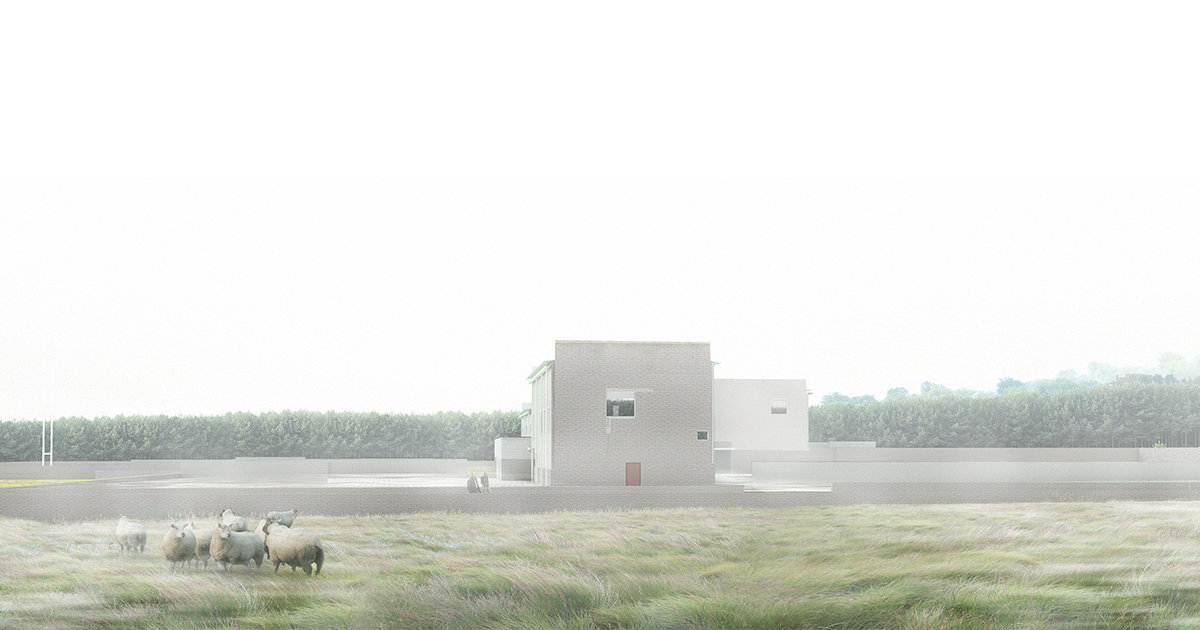
Music and Architecture are often compared in loosely aesthetic ways, making connections between the nature of composition in both fields, but this analogy serves a purely philosophical end. This thesis aims to bring back the diminishing world of harmony, proportion and order to architecture through a retelling of the musical analogy and a new definition that priortises tangible experience of such harmonies
The thesis tracked the history of harmonics to its recent decline and considered ways that we could think about harmony that begin with human optics and mentalities, rather than it’s divine origin.
The universal ideas put forward here have been manifested in a new Gaelic Athletics Association club for the town of Mountbellew in Co. Galway. Harmony can exist anywhere once there has been proper consideration for a building’s parts, systems and their interrelationships.
In this field in Galway, downpipes and expansion joints become classical colonnades, and plasterboard, PVS and linoleum are all used to make a beautiful place that from time to time will spark a sense of harmony in its users.
This student worked within a group entitled Commonplace, charged with unearthing the extraordinary in the ordinary. He interpreted this challenge through his own thesis interest in the human registration of harmony within architecture.
His scheme provides facilities for traditional, commonly played Irish sports in the grounds of a former great house in a colonial town in the west of Ireland. The most ordinary of briefs is thereby charged with the weight of architectural, landscape and political history. Banal materials are economically employed in changing rooms, bar, sports hall and playing pitches, but overlaid with a grandeur befitting the heroism of sport, through careful attention to harmonious proportion, order and number. Internally, surfaces are manipulated with paint and linoleum to evoke the scale and composition traditionally accorded to high architecture. Externally, concrete blocks and rainwater goods are modelled with an eye to classical building. The landscape of football borrows from the perspectival tradition of the Baroque.
The project skilfully allows rural Irish life to be played out in an architecture whose composition and attention to detail is traditionally found only in the privileged urban realm. The work is deeply engaged with construction, whilst exceeding its commonplace limits. It adeptly combines the experiment of harmony with the experience of human registration to provide an achievable, economic model for a delightful reinterpretation of the ordinary.